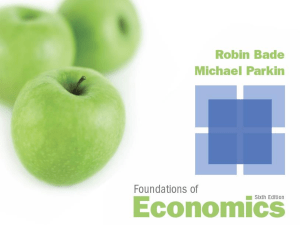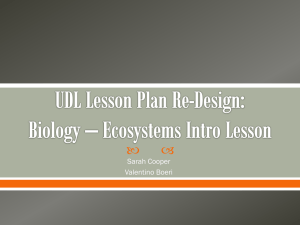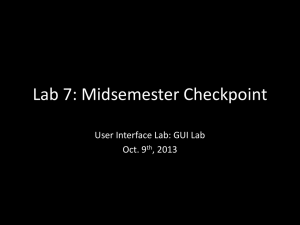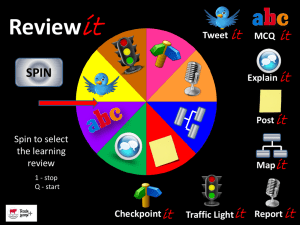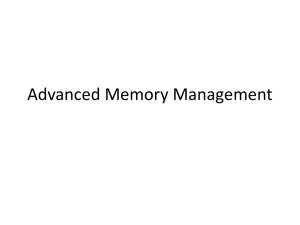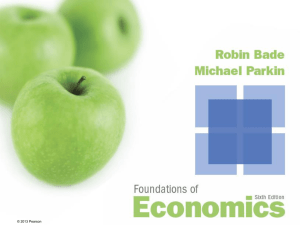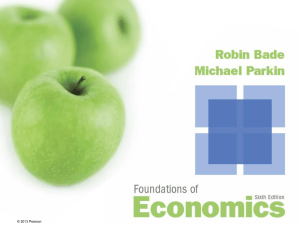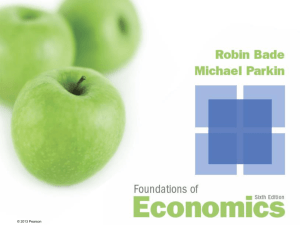Ch12
advertisement
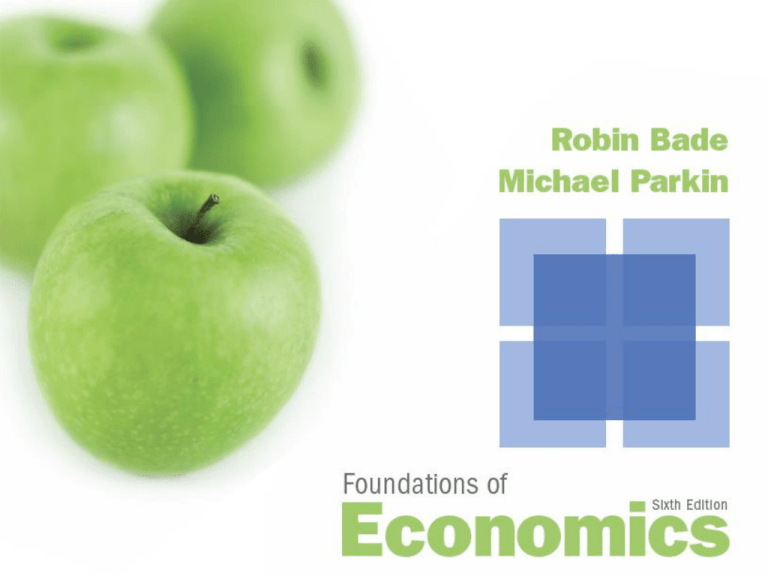
Click Clickon onthe thebutton buttontotogo gototothe theQuestion problem © 2013 Pearson Markets with Private Information 12 CLICKER QUESTIONS © 2013 Pearson Click Clickon onthe thebutton buttontotogo gototothe theQuestion problem Checkpoint 12.1 Checkpoint 12.2 Checkpoint 12.3 Question 1 Question 5 Question 8 Question 2 Question 6 Question 9 Question 3 Question 7 Question 10 Question 4 © 2013 Pearson CHECKPOINT 12.1 Question 1 Asymmetric information means that ___________. A. the buyer always has information that the seller does not have B. the seller must have information that the buyer does not have C. either the buyer or the seller has information that the other does not have D. the buyer and the seller have the same information E. the seller has more information than the seller © 2013 Pearson CHECKPOINT 12.1 Question 2 The lemons problem in the used car market is that ______. A. the price of a lemon is too high B. the price of a lemon is too low C. no lemons are bought or sold D. only lemons are bought and sold E. the price of a lemon is too high and too many lemons are traded © 2013 Pearson CHECKPOINT 12.1 Question 3 In the used car market with a pooling equilibrium, the price of a lemon is _____ the price of a good car, and with a separating equilibrium, the price of a lemon is ______ the price of a good car. A. B. C. D. E. less than; equal to equal to; less than equal to; more than more than; equal to equal to; equal to © 2013 Pearson CHECKPOINT 12.1 Question 4 If buyers cannot assess the quality of used cars and there are no warranties, then___________. A. only lemons are sold B. only good cars are sold C. good cars are sold at a higher price than lemons D. there is no adverse selection problem E. all cars (lemons and good cars) sell for the same price © 2013 Pearson CHECKPOINT 12.2 Question 5 Mark is an aggressive driver so he is more likely to buy auto insurance. This situation illustrates the idea of ________. A. B. C. D. E. moral hazard adverse selection the lemons problem inefficiency in the insurance market a separating equilibrium © 2013 Pearson CHECKPOINT 12.2 Question 6 When Sam makes an agreement and then behaves after the agreement in a way to increase his benefits and harm the other party to the agreement, Sam is illustrating ________. A. B. C. D. E. signaling adverse selection moral hazard the cost of contracting a pooling equilibrium © 2013 Pearson CHECKPOINT 12.2 Question 7 Screening _______. A. leads to a pooling equilibrium in the insurance market B. means that an uninformed person passes knowledge to an informed person C. makes no-claim bonuses unnecessary D. explains why insurance companies offer both low-premium, high-deductible policies and high-premium, low-deductible policies. E. makes the insurance market inefficient © 2013 Pearson CHECKPOINT 12.3 Question 8 Moral hazard in the market for health-care services leads ______. A. patients to adopt healthier life styles B. to a separating equilibrium C. everyone to buy health insurance D. healthy people not to bother buying health insurance E. health-care providers to overtreat patients © 2013 Pearson CHECKPOINT 12.3 Question 9 The missing market in the health-care market is the insurance market for _______. A. young healthy people B. infectious diseases C. people who have pre-existing health conditions D. people who are employed by HMOs E. vaccinations © 2013 Pearson CHECKPOINT 12.3 Question 10 Vaccinations against infectious diseases ____ , so private markets will provide _____ efficient quantity of vaccinations. A. B. C. D. E. are a public good; less than the are a public good; the lead to adverse selection; less than the have a positive externality; less than the have a positive externality; the © 2013 Pearson


